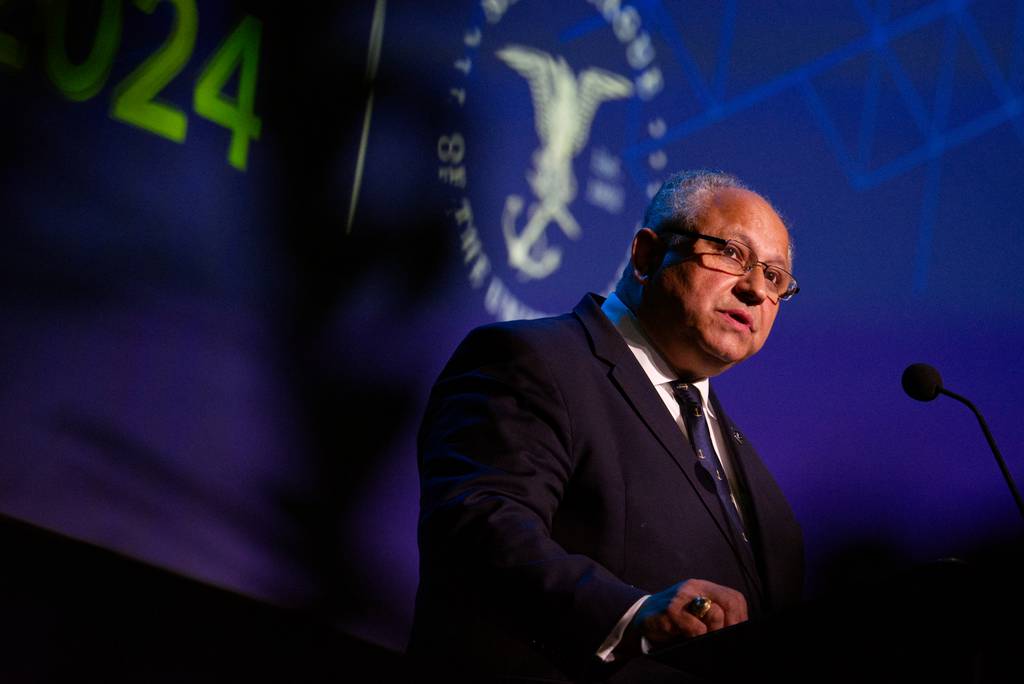
NATIONAL HARBOR, Md. — The U.S. Navy has released a road map partly aimed at improving ship construction and repair yards, as the service grapples with how to get its major shipbuilding programs back on schedule.
A week after releasing a shipbuilding review that acknowledged several top ship programs are one to three years behind schedule, Navy Secretary Carlos Del Toro said the service is already taking actions to recover from these delays.
Each program executive office has plans to address shortfalls within its portfolio, he told Defense News at the Navy League’s annual Sea-Air-Space conference, and in some cases this involves greater oversight over shipyards and subcontractors.
He said a number of delays are related to major components being delivered to prime shipyards late. The Navy is working “to get to the root cause of what’s causing these delays and how we can strengthen the industrial base to prevent them in the future,” he added.
The secretary identified multiyear procurement contracts and advanced procurement funding as ways to get materials and components to shipyards early, noting the Navy will continue to advocate for these spending and contracting tools.
But moreover, he said during his lunchtime speech, “right now we build the most capable warships in the world in shipyards that are sometimes decades behind the global technological standard. This is an inefficient approach requiring far too much time, workforce and taxpayers’ dollars.”
Noting that South Korean and Japanese shipyards build “high-quality ships, including Aegis destroyers, for a fraction of the cost that we do,” he said he is interested in understanding how the U.S. Navy can leverage the digital tools these nations’ shipyards use.
“When my team and I went to South Korea, we were floored at the level of digitization and real-time monitoring of shipbuilding progress, with readily available information down to individual pieces of stock materials. Their top executives could tell us — to the day — when ships would actually be delivered,” he said in his remarks. “I am pushing our shipbuilding industry to invest in itself to get better, to be technological leaders, and to once again deliver platforms on time and on budget.”
Del Toro told reporters after his speech that the Navy’s science and research road map, released April 9, would consider “what science and technology innovations can we bring to the table that perhaps aren’t being used here in the United States, that are being used elsewhere with our partners, for example, to help digitize our public shipyards.
A publicly released summary of the road map does not elaborate on this particular topic.
During a separate panel discussion, the program executive officer for ships, Rear Adm. Tom Anderson, said his organization had previously drawn commercial best practices from elsewhere in the U.S. but hadn’t looked outwards at foreign shipyards.
As part of Del Toro’s ongoing push to improve shipbuilding performance as well as bolster the commercial shipbuilding and ship repair industries, Anderson said Program Executive Office Ships has begun strengthening relationships with Japanese and Korean yards.
Anderson said he was particularly impressed with the volume and throughput of the Korean yards he visited, as well as their focus on creating an environment around the shipyard to support workers and their families.
That comment is in contrast to what Del Toro and other sea service leaders said this week — that it is challenging to recruit and retain workers at U.S.-based yards.
Author: Megan Eckstein
Source: DefenseNews



